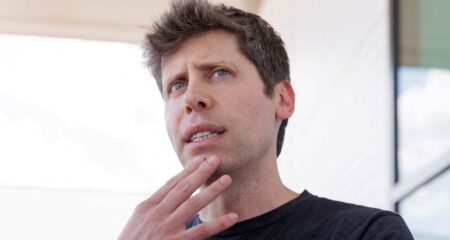 Amazon.com’s cloud unit has built its first quantum computing chip, joining a growing roster of technology companies showing off futuristic hardware.
Amazon.com’s cloud unit has built its first quantum computing chip, joining a growing roster of technology companies showing off futuristic hardware.
Google and Microsoft in the last two months have announced their own quantum hardware, suggesting that the powerful form of computing — currently relegated to science experiments — may solve real problems in the coming years. Others say useful quantum computers, which might enable advances in chemistry or healthcare, are more than a decade away.
Amazon Web Services’ new Ocelot chip, developed by a team working at the California Institute of Technology, comprises two tiny squares of silicon stacked on top of each other. The name is a play on words, referring to oscillators, which generate periodic electric signals, including in the prototype hardware Amazon developed.
“Five years ago, I could have told you, ‘I think I could build a quantum computer and could build it practically,’” said Oskar Painter, head of quantum hardware at AWS. “Today I can say with confidence we are going to build a quantum computer.”
Bits, the foundational units of computing, store information represented by a one or a zero. Quantum computers use quantum bits, or qubits, which reflect the probability of a one or a zero and can appear as both simultaneously. That makes quantum computers able to consider more possibilities exponentially faster than a traditional computer.
Cat qubit
The longstanding challenge is dealing with the errors that occur when trying to coax fickle quantum particles into a useful state. Tiny variations in heat, vibration or electromagnetic interference can introduce mistakes into a calculation.
Amazon’s process relies on a cat qubit, named for the Schrödinger’s cat thought experiment that posited an animal can be in two separate states at once.
Each Ocelot chip contains five qubits that store data, circuits for stabilising them and four additional qubits to detect errors on the data qubits. The company says its architecture has the potential to reduce the cost required to build a quantum computer and its associated components by 90%, compared with some other approaches. Some of Amazon’s findings are being published on Thursday in the journal Nature.
Read: Google says it has cracked a major challenge in quantum computing
Painter, who is also a professor at Caltech, said he expects useful quantum computers to arrive in “a decade or two”, with a decade on the aggressive side. “It’s important to keep a humble approach to where we are,” he said. — Matt Day, (c) 2025 Bloomberg LP
Get breaking news from TechCentral on WhatsApp. Sign up here




